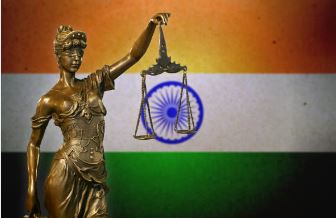Comment On Adequacy Of Fair Dealing In India
INTRODUCTION
Copyright is a part of intellectual property rights and it means the exclusive right to do or to authorise others to do certain acts. The main object of copyright is to protect the creator of original work from unauthorised reproduction.
As per Section 52(1), fair dealing can be used as a defence for permitted use of the copyrighted works claiming that such use does not amount to infringement.
The Fair Dealing principle is an exception to the infringement of copyrights. The principle allows replication, reproduction or use of a copyrighted work for certain purposes. The principle is considered an integral part of laws relating to copyrights.

It is an exemption to the exclusive right granted to the original creator of the copyrighted work. It allows the use of copyrighted work along with some amount of value addition to the original copyrighted work. Such value transformation in the said copyrighted work shall not amount to a violation of the copyright of the original work.
HISTORIACL DEVELOPMENT
Fair dealing was first developed by English courts in the 18th century in response to the ‘statue of van’ which was adopted by the parliament in 1710 which recognises the legitimacy of few activities which would be justified and believed that allowing such activities would be fair, from which the English courts itself evolved the concept of ‘fair dealing’ and adopted it in 1841. From British courts, the terminology ‘fair dealing’ finds its presence in copyright provisions of colonies. When it was adopted by US Courts, they changed its terminology to ‘fair use’. Till 1975 the term ‘fair use in the US was entirely a judge-made concept which finally got codified in 1996 in the US copyright act, which distilled the case law into statute.
Article 13 of TRIPS Agreement and Berne Convention recognise the concept of “fair dealing,” which is based on the idea that, in some circumstances, it is necessary to grant an exception to the use or reuse of a protected work even though doing so would constitute an “infringement” for the benefit of the general public.
FAIR DEALING UNDER INDIAN LAW-
In India, the concept of copyright appeared after the invention of the printing press which made the process of reproduction of literary work a piece of cake.
India recognised the concept of fair dealing which find its place in sections 39 and 52 of the Copyright Act. As section 39 mentions with acts not infringing broadcast reproduction rights and performer’s rights, section 52 lists the acts that do not constitute an infringement of copyright as it allows exceptions which are protected from copyright infringement but these exceptions are not defined transparently which led to uncertainty and ambiguity.
Although the above-mentioned sections talk about fair dealing it nowhere defines the term “fair dealing”, and does not specify how fair it is to use the document of the creator. It is solely based on judicial interpretation as in most of the cases, the courts refer to the landmark judgment of Hubbard v. vopser[3] wherein it was observed that “fair dealing” is a question of degree. It further said that the “first one must look at the number of quotes, then the use of these quotes need to be considered, then the proportion and there may be other considerations too”. However, in the end, one needs to look at the impression.
The provision of fair dealing creates a hindrance to other creations because it provides exceptions to only those who fulfil the exhaustive list of grounds provided in the section. By this, it appears to limit the extent of creative applications that are acceptable for work, without factoring in the practical effects of the same.
The problem is also with the ambiguous definition of ‘fair dealing’ which is left upon the court’s discretion to interpret and decide how to apply it. The vagueness between the lawful and unlawful use of the original creation left the line between the bonafide and malafide use of the doctrine of ‘fair dealing’ undecisive. It is purely left to the judiciary to interpret what is ‘fair’ and on what basis it will fall under the exceptions provided in section 52, which deteriorates the situation.
The Delhi high court in the famous case of India TV Independent News Service Pvt. Ltd. v. Yashraj Films Pvt. Ltd ]. has held that the four-factor test as used in the United States should be referred to in order to interpret the term ‘fair dealing’. This decision does not bind any court, allowing them to reach an entirely different interpretation on the basis of their rationale. Thus, there is no defined law stated by the legislature to look upon, that what are the defined creations which fall under exceptions, at there is a recent dichotomy on whether memes fall under exceptions of fair dealing or not. Further, the recent The Chancellor, Masters & Scholars of the University of Oxford & Ors. v. Rameshwari Photocopy Services & Ors (DU photocopying case) also put a strain on the need to define the exceptions, as the authors in the case cited that they can’t let their hard work to be wasted, but the court held in favour of photocopy shop which copied for the purpose of benefit of the students cannot be quoted as in violation of copyright act.
CONCLUSION
The concept of ‘fair dealing’ as adopted by India is more confined and restricted in comparison to the broad concept adopted by the United States i.e., ‘fair use’ which clearly defined the four-factor test. The uncertainty regarding the protection of the work because of the ambiguous definition of ‘fair dealing’ without any legislative guidance, puts the scholars in peril.
Thus, in developing nations like India, there is a critical need to promote innovation and creativity in all spheres, including research and creative endeavours like literature, music, and theatre. The expansion of the scope of the doctrine of ‘fair dealing’ will encourage the young generation to participate and allow them to be a part of various global developments too. Thus, a flexible and liberal approach needs to be adopted like that of the U.S. doctrine of ‘fair use’ which will balance out the interest of individuals and of society based on the principles of justice, equity and good conscience.
SUGGESTIONS
India needs to either amend Section 52 or it should specifically evaluate and state what more things can be included in the Fair use by pronouncing various judgments. As “Copyright is intended to increase and not to impede the harvest of knowledge.” Therefore, a wider interpretation should be adopted of section 52 of the copyright act in public interest in order to eradicate the current lacunae in the act regarding fair dealing which are inadvertent errors and need to be rectified. Thus, India needs to wake up to the urgent reforms required to be made in copyright law in order to drain away its monopolistic colour and restore a balance between public and private interests.
Author: Vrinda Singh, 3rd-year student, at Ram Manohar Lohiya National Law University, in case of any queries please contact/write back to us at support@ipandlegalfilings.com or IP & Legal Filing.


